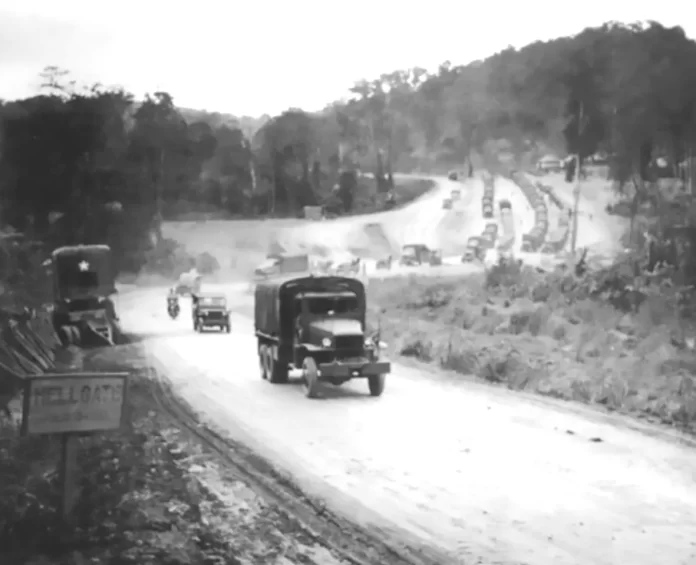[ Tom Simai ]
Hell Gate, or Nampong, is not just a geographical location but a poignant historical landmark in the northeastern part of India, close to the border with Myanmar. Situated in Changlang district, Arunachal Pradesh, Nampong gained its rather ominous nickname during World War II due to its strategic and perilous position on the Stilwell Road, a critical supply route during the conflict known as ‘Hell’s Pass’ or ‘Pangsau Pass.’
Nampong was indeed a gateway but one that opened into some of the most challenging terrains and conditions faced by the Allied forces during the war. The Stilwell Road, named after General Joseph Stilwell, was constructed with the aim of connecting Ledo in Assam to Kunming in China, thereby providing an alternative supply route when the Japanese had blocked the Burma Road. The road’s construction was an engineering marvel but came at a tremendous human cost, with Nampong being one of the key points of this struggle.
The landscape around Nampong is dramatic, with the elevation gaining from approximately 300 metres at Nampong to nearly 1,200 metres at Pangsau Pass. This steep incline, combined with dense jungles, frequent landslides, and harsh weather conditions, made the area a true ‘hell’ for the soldiers, engineers, and labourers who worked there. The monsoon rains would often turn the paths into quagmires, increasing the difficulty of moving supplies and troops, making Nampong a critical logistical node where the Allies had to battle not just the Japanese but nature itself.
During the war, Nampong was a melting pot of different cultures and nationalities, with American, British, Indian, Chinese, and local tribal forces like the Tangsa, Adi, Naga and Kachin coming together. The town, though small, became a symbol of international cooperation and human resilience in the face of adversity. Stories from Nampong speak of shared meals, mutual help, and the translation of survival tactics across cultural lines, forming a unique tapestry of wartime camaraderie.
After World War II, Nampong’s role diminished, but its historical significance remained. Today, the town has grown from a village to a modest township, with a population now exceeding 4,000. The road from Nampong has been transformed into a modern two-lane highway, a stark contrast to its wartime counterpart. However, the memories of its past are preserved through the occasional opening of the border for the Pangsau Pass International Festival, where locals from both sides of the border gather to celebrate and remember their shared history.
Hell Gate is a reminder of how history shapes places, turning them into symbols of struggle, survival, and solidarity. It’s a place where the legacy of World War II is etched into the very landscape, where each bend of the road and every stone tells a story of sacrifice and human spirit. Nampong stands as a testament to the forgotten battles of the CBI theatre, a less discussed but no less significant part of global history. While the gates of hell are now a part of history, the gate of Nampong continues to be a gateway to understanding the profound impacts of war on human lives and landscapes.




